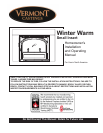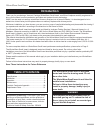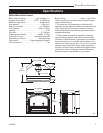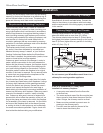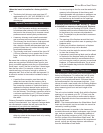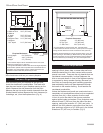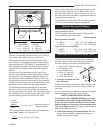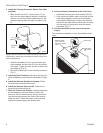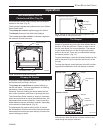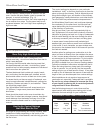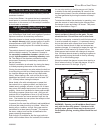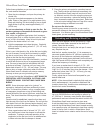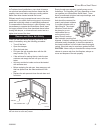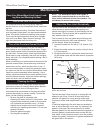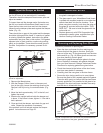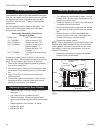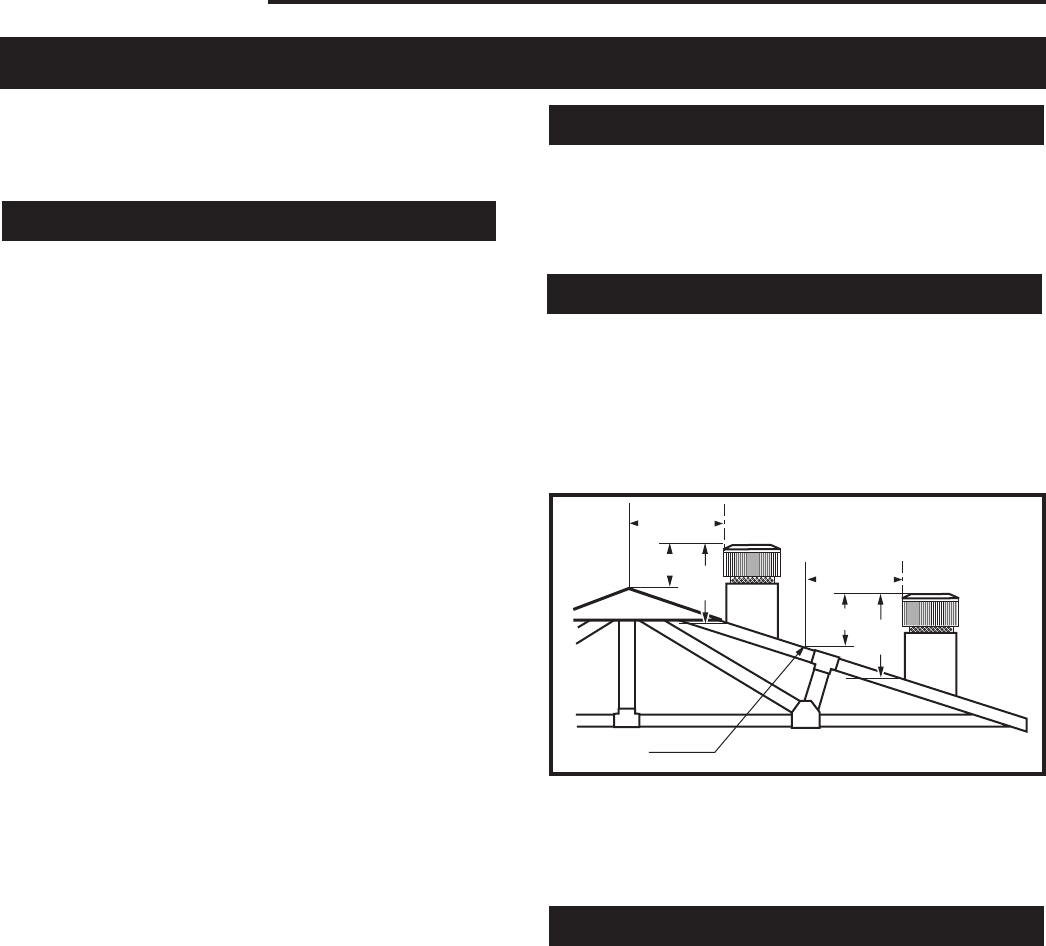
4
WinterWarm Small Insert
2000888
Installing the WinterWarm Small Insert into an existing
masonry or factory-built fireplace is an effective way to
add an efficient heater to your home. The existing fire-
place and chimney must meet certain requirements.
Requirements for Existing Fireplaces
The WinterWarm Small Insert is listed for installation
within a properly built masonry or heat circulating, ma-
sonry-type fireplace that is constructed in accordance
with the requirements of recognized building codes. A
heat-circulating masonry-type fireplace must conform
to building code standards for masonry fireplaces, and
must consist of a factory-built metal firebox with air
circulation pathways that are surrounded by masonry
materials. Air circulation pathways must not be blocked
by the insert or surround panels.
The fireplace and chimney must be clean and structur-
ally sound. Have them inspected by a qualified pro-
fessional chimney sweep, a mason, or your Vermont
Castings’ Authorized Dealer before the WinterWarm
Small Insert is installed. Any deterioration (cracks, loose
mortar or loose bricks) must be repaired.
Codes may permit removal of the damper in order to
make a positive connection for the vent between the
firebox and the chimney. However, the fireplace should
not be modified in any way without first checking with
your local building inspector or fire marshal. Provision
should be made to restore the fireplace to its original
condition if the insert is removed. Do not remove bricks
or mortar that may jeopardize the compliance of the
fireplace with local building codes.
The WinterWarm Small Insert is also listed for installa-
tion in tested and listed factory-built fireplaces. Listings
for factory-built fireplaces include meeting standards
for both the firebox and chimney. Review the owner’s
manual, and inspect the fireplace for metal tags or
labels which give information concerning installation of
inserts into the factory-built fireplace. Codes may permit
removal of the damper in order to install a chimney
liner. Codes may also permit removal of external trim
pieces which do not affect the operation of the unit, as
long as the pieces are stored on or within the fireplace
for re-assembly if the insert is removed. Air flow within
and around the fireplace shall not be altered (louvers
or cooling air inlet or outlet ports may not be blocked).
Louvered surrounds are permitted. Again, check with
local authorities before making any modifications.
Installation
Requirements for Existing Chimneys
Chimney requirements differ for the U.S. and Canada.
Specifications for each are listed below. Connect the
insert to the chimney in accordance with local codes
and the requirements of the listing agency as specified
in this manual.
Chimney Height / U.S. and Canada
Chimney height should be no less than 15’ (4.5m)
above the hearth and no more than 35’ (10.5m).
The chimney should extend at least 3’ (914m) above
the highest point where it passes through a roof, and at
least 2’ (610mm) higher than any portion of a building
within 10’ (3m). (Fig. 2)
Do not connect your WinterWarm small insert to a
chimney flue serving another appliance.
U.S.
In the U.S. (ANSI/NFPA 211, 1988), when
installed in a masonry fireplace:
• A connector must extend from the flue collar
to the flue liner.
• The cross sectional area of the flue must be less
than or equal to three times the area of the flue
collar. If larger, the chimney must be re-lined.
• Means must be provided to prevent room air
passing to the chimney cavity.
• Provision must be made for removal of the
insert to clean the chimney flue.
2' Min.
2' Min.
3'
Min.
0 To 10'
3'
Min.
0 To 10'
AC617
RLTSKC8
2/11/98
AC617
Reference
Point
Fig. 2 The 2’-3’-10’ rule for chimneys.



